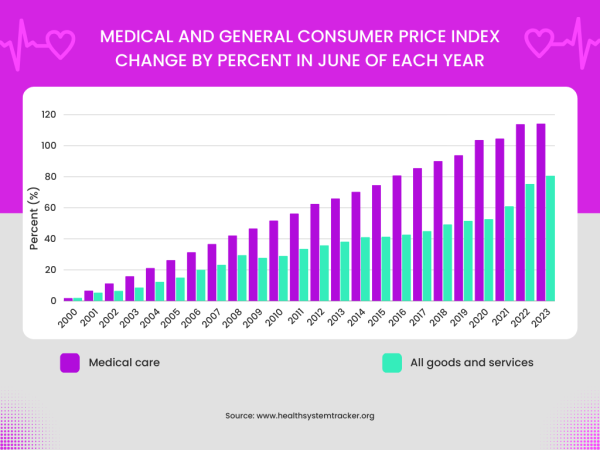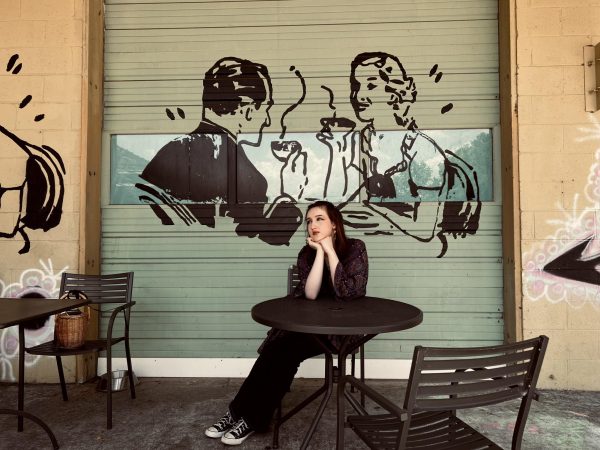In the United States, certain citizens may believe that their Creator endows them with unalienable rights: rights to life, liberty and the pursuit of happiness. Although the government theoretically protects these rights, young Americans stir with discontent and fear. They feel this unrest because they observe that their right to life has become capitalized upon by the businesses devoted to protecting it, while left unprotected. This feeling comes as a result of the difficulty of protecting one’s health in the U.S. The prices of healthcare and quality foods significantly outweigh reasonability, especially when compared to other developed countries.
The primary difference between the U.S. and other developed countries arises due to countries passing helpful legislation to socialize healthcare, such as The U.K.’s Beveridge Model and Canadian Medicare. Additionally, Americans struggle to naturally obtain necessary day-to-day exercise due to the inadequate infrastructure common in the country. Typically, public transportation in the U.S. lacks quality and accessibility, running inefficiently and only in select areas. This subpar transportation system combined with the generalized poor walkability of American cities and suburbs leaves society dependent on cars to travel from place to place. These cars, necessary for the basic mobility of a majority of Americans, do not provide the natural exercise that walking does. These conditions also increase the difficulty for underprivileged individuals to access health-conscious spaces such as gyms, parks and nutritious foods. Superior versions of these spaces tend to reside in areas with higher concentration of wealth, creating less accessible conditions for those who live in less-funded areas.

In addition to the lack of unintentional or accessible exercise, food has become a luxury in the U.S., particularly quality, nutrient-dense food. The cost of food items such as fruit and vegetables, especially organically grown vegetation, exceeds the cost of processed foods such as chips or prepackaged cookies. A Harvard and Brown University review of 27 studies found that unhealthy food costs around $1.50 less each day than healthier alternatives. This general inexpensiveness gains no relief from the fact that welfare programs such as the Supplemental Nutrition Assistance Program (SNAP) fail to adequately provide funding for those enrolled to purchase foods consistent with federal healthy-eating guidelines. These guidelines essentially detail the importance of high quantities of plants and proteins, balanced with lesser quantities of simple carbs and fats. The class divide seems to grow wider, while the poor struggle to afford enough healthy food to keep their bodies feeling fit. At sumptuous stores such as Erewhon, wealthy people can purchase an 18 oz jar of almonds for around $26; comparatively, one may purchase almost double the weight of almonds from Walmart for less than $8. The price of food in luxury stores, which flaunt health and quality, drives home feelings of elitism Americans observe in their pantries.
“SNAP and WIC, the Special Supplemental Nutrition Program for Women, Infants, and Children, those two programs provide food assistance for populations who may need it. There has been a recent push to make sure that more healthy foods are available under those sorts of programs, but the thing is, is that a lot of those kinds of foods, like lean cuts of meat or a lot of fruits and vegetables. It’s not just that the foods themselves cost more, it’s that they take time to prepare, and very often when people are in positions of poverty, what they lack is time… So getting the cheaper, faster option becomes not just the economically rational choice, but also the ‘something has to give’ choice,” AP Comparative Government teacher Carolyn Galloway said.
Heaped atop the price of healthy food, the cost of healthcare weighs immensely on Americans, particularly the unemployed, uninsured and poor. The cost of healthcare before financial support in America appears beyond reasonability to citizens. Depending on the length of the ride and what support the patient requires, the average ambulance ride in America can cost between $940 to $1300. Once the patient arrives at the hospital or doctor’s office, they need to pay for the necessary procedure. Common life-saving procedures, such as appendix removal, can quickly become costly, particularly including necessary time spent in recovery in the rooms. In most cases, the charges can reach from $1000 to $100,000 and beyond, only worsening the incredible price of the procedure when combined with the unpredictability.
Those against healthcare socialization argue that programs such as Medicaid and insurance provide a sufficient amount of security for disadvantaged groups. Unfortunately, their logic falls flat when considering that not all uninsured individuals can easily attain Medicaid or a job that provides an adequate health insurance plan. Even if the individual does gain this advantage, they still need to reach their deductible and utilize only doctors and procedures that the insurance covers, creating arbitrary barriers to healthcare that do not exist for the wealthy. If an individual fails to pay for one of their expensive but unavoidable medical costs, their credit score decreases, likely increasing their difficulty transitioning into a stable financial situation and spiraling them further into struggles to live.
“In a social democratic system that prioritizes public healthcare… Everybody will kick in for it to a greater degree in terms of taxation on the front end… One thing that a subsidized or public healthcare system can do, however, that can be very effective is preventative medicine, and preventative medicine is one thing that the U.S. system doesn’t do particularly well because it requires that individuals pay, to a greater or lesser extent, every time they go to see their doctor… and that can discourage people from going and getting the medical care that they need,” Galloway said.
Regardless of one’s standing in society, one’s life story or the money in one’s pocket, every single person deserves to maintain their health and do so without sacrificing their futures. No just world exists where the rich can capitalize on the ailments of the poor, so the time has arrived for healthy food to become affordable and healthcare to become a government-funded and protected right. Until then, the cost of living in America will remain a dystopian nightmare, where only the Effie Trinkets of the world will truly attain the luxury of life.











